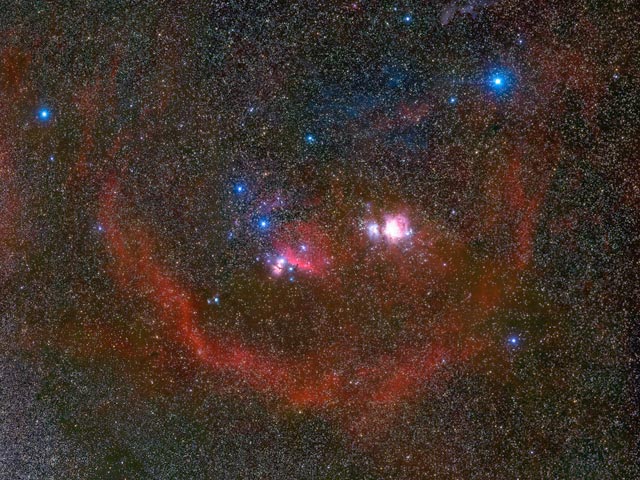Explanation: Why is the belt of Orion surrounded by a bubble? Although glowing like an emission nebula, the origin of the bubble, known as Barnard's Loop, is currently unknown. Progenitor hypotheses include the winds from bright Orion stars and the supernovas of stars long gone. Barnard's Loop is too faint to be identified with the unaided eye. The nebula was discovered only in 1895 by E. E. Barnard on long duration film exposures. Orion's belt is seen as the three bright stars across the center of the image, the upper two noticeably blue. Just to the right of the lowest star in Orion's belt is a slight indentation in an emission nebula that, when seen at higher magnification, resolves into the Horsehead Nebula. To the right of the belt stars is the bright, famous, and photogenic Orion Nebula.
1999 2000 2001 2002 2003 2004 2005 2006 2007 2008 2009 2010 2011 2012 2013 2014 2015 2016 2017 2018 2019 2020 2021 2022 2023 2024 2025 |
Январь Февраль Март Апрель Май Июнь Июль Август Сентябрь Октябрь Ноябрь Декабрь |
NASA Web Site Statements, Warnings, and Disclaimers
NASA Official: Jay Norris. Specific rights apply.
A service of: LHEA at NASA / GSFC
& Michigan Tech. U.
|
Публикации с ключевыми словами:
Orion - emission nebula - supernova - Орион - эмиссионная туманность - Сверхновые
Публикации со словами: Orion - emission nebula - supernova - Орион - эмиссионная туманность - Сверхновые | |
См. также:
Все публикации на ту же тему >> | |
